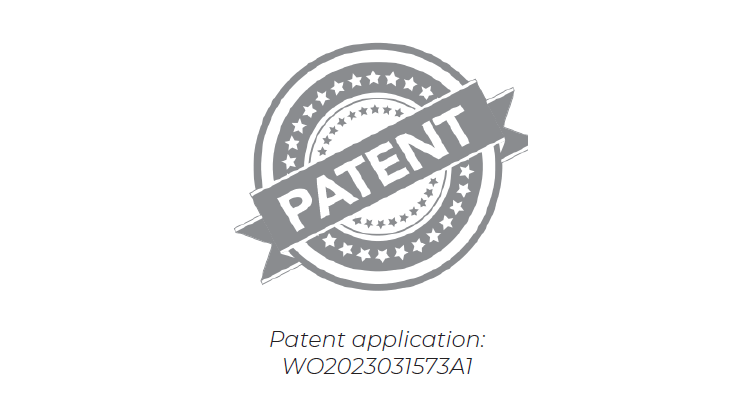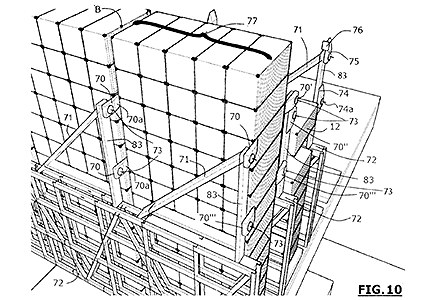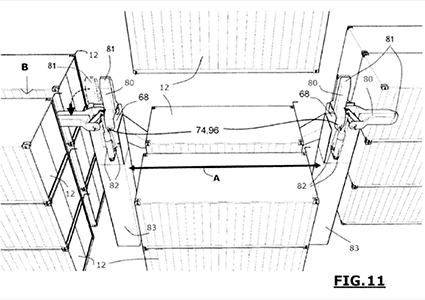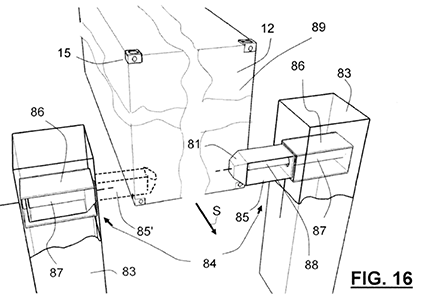
Patent of the month | Russell Edson discusses containing environmental impact
The global shipping industry currently faces increased pressure to provide faster, cheaper and more environmentally friendly freight transport services. Solutions include using greener fuel sources such as hydrogen or nuclear, greener propulsion methods such as wind power, or overhauling operations by slowing vessels down and planning more efficient routes.
The best way to reduce the environmental impact of shipping is to reduce the number of total journeys. A World Shipping Council report estimated that on average a total of 1629 shipping containers are lost at sea every year. These containers often float just below the surface of the ocean, which can be hazardous to other vessels and marine life. Such losses also mean the end customer will not receive their order and a replacement container will have to be shipped. Lost containers are therefore hazardous to both freight traffic and the environment. One consideration for making shipping more environmentally friendly is therefore reducing incidences of container loss.
In 2022, Clive-Smith Associates Limited filed a patent application for a system to improve the protection of columns of containers on a container ship against transverse sway. On 9 March 2023, this application was made publicly available under the publication number “WO2023031573A1”. The application describes a lashing device, as seen in Figure 10 below. The device has columns (83), which are supported by stays (71), and restraints in the form of projections (70).

The projections (70) extend from the columns (83) in order to prevent transverse sway. Crucially, however, the projections are moveable. The description sets out that the projections can move vertically along the columns (83), using actuators. Meanwhile, Figures 10, 11 and 16 show that the projections (80) can also be rotated if fixed on the columns (83) by pivot pins (96). Each of the configurations of the projections provides a means of maintaining the position of the containers and preventing sway, while also facilitating simple deactivation mechanisms for faster unloading.

The example of Figure 16 shows a different arrangement in which there are projections (85) that extend and retract in a linear fashion, rather than by rotation. To achieve this, the projections are capable of telescoping out of their individual housings (86) horizontally within the columns (83) by being actuated hydraulically. Because of the various means of deploying and stowing the projections, the claims included in the patent application are written to cover a wide variety of possible arrangements.
The invention further includes securing elements designed to engage with the universal locking system found on containers. This means that the system could be installed on existing container ships and would be effective with containers currently in use. Clive-Smith Associates’ invention could therefore help to reduce the number of containers lost at sea from both existing and future vessels.
 At present, a search report has been drawn up based on the current claims in the application and cites a pre-existing patent application (“prior art”), published in the name of another party, as already disclosing the main features of this invention. The applicant will however have an opportunity to present arguments as to why their invention is different from, and an improvement upon, the prior art cited in the international search report. They may also amend the claims in their patent application to try to differentiate their claims from the prior art disclosed.
At present, a search report has been drawn up based on the current claims in the application and cites a pre-existing patent application (“prior art”), published in the name of another party, as already disclosing the main features of this invention. The applicant will however have an opportunity to present arguments as to why their invention is different from, and an improvement upon, the prior art cited in the international search report. They may also amend the claims in their patent application to try to differentiate their claims from the prior art disclosed.
Protecting the invention with a patent will help to prevent it from being copied by competitors, and protect market share, while also serving as a useful marketing tool. The disclosed system now has ‘patent pending’ status, but if the application is granted, the patent owner will gain monopoly rights to market its technological solution for a period of 20 years, and may be able to claim reduced corporation tax under the UK’s Patent Box tax regime.
Protecting the environment is the responsibility of all sectors, including the shipping industry. Carefully reassessing the processes, operations and equipment required for marine transportation could open the door to new sustainable solutions at the same time as bringing significant commercial opportunities for innovators.
For a list of the sources used in this article, please contact the editor.
Russell Edson is a partner and patent attorney at European intellectual property firm, Withers & Rogers. He specializes in advising innovators of technologies for use in a variety of transport industry settings – road, rail, air and marine.
www.withersrogers.com